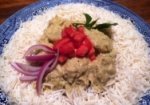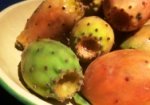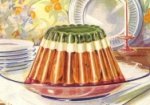A recent fundraising event at the historic gold mining town of Hill End in regional New South Wales celebrated colonial hotelier and cookbook author, Hannah Maclurcan. We have a particular attachment to ‘Mrs Maclurcan’ as one of her books remains in the Rouse family’s cookbook collection at Rouse Hill Estate.
Annotations and food splodges and splatters on many pages in the 1902 edition of Mrs Maclurcan’s cookery book which belonged to Nina Terry (nee Rouse) tell us that Nina’s tastes were much in line with Hannah’s. It’s not evident whether Fricasseed sheep’s heads were Rouse family favourites, but this was one the the many of dishes served to guests at the ‘long lunch’ ….

Menu cover showing facsimile of Hanna Maclurcan’s English edition 1899 Photo © Di Greenhaw
Queen of cookery books
Hannah Maclurcan was declared ‘Queen of cookery books’ by the media in 1902, following the release of the fifth edition of Mrs Maclurcan’s cookery book, first published in 1898. Hannah was something of a social someone, firstly in Queensland where she ran various hotels and wrote the first edition, and then in Sydney from 1901, when she and her husband bought the Wentworth Hotel in Jamieson Street, where the Sofitel now stands. A thoroughly ‘modern’ woman in the true sense of changing social views at the turn of the twentieth century, she led a fascinating life which began in quite humble circumstances in the goldfields at Tambaroora near Hill End in rural New South Wales. Once thriving townships these historic villages have a rich history and strong heritage significance.
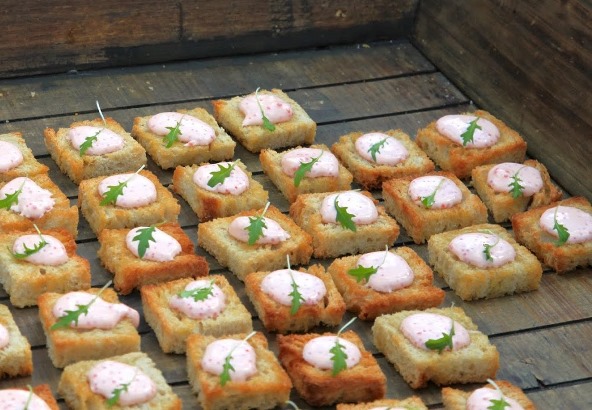
Mrs Maclurcan’s Cod roe cream by Mudgee caterer Rebecca Sutton Photo © Di Greenhaw
Eating our history
Inspired by Hannah’s success, Sydney-sider Karen Bates, whose own family has historical connections with Hill End & Tambaroora, hosted Hannah’s Long Lunch to raise funds for an ongoing restoration project to conserve the town’s collection of historic photographs, some of which date to the mid 1800s. Seventy odd guests assembled in a paddock at Hill End Ranch to develop a taste for Hannah’s cuisine and her life and times. The menu was developed by local Mudgee caterer Rebecca Sutton, and included some colonial classics, taking some diners well out of their comfort zone:
On arrival: Cod roe cream on toast; Curried banana on rice; Cheese darlings
On seating: demitasse of Kangaroo tail soup; Potato and rosemary bread; warmed olives in oil, orange and thyme
Entree: Tinned salmon rissole with potato salad and lettuce salad
Main: Fricaseed sheep’s head; Stuffed bolar of beef; Celery a l’Italienne and boiled potatoes
Cheese: High Valley Caerphilly and Washed rind
Dessert: Hill End Berry Estate blackberry tart and vanilla bean ice cream
Needless to say, yours truly was very excited to try sheep’s head fricassee (enriched with the sheep’s brains) made by someone other than myself (you’ll have to go to ‘oliveatwist’ on instagram to see the evidence!). While I would not inflict sheep’s heads on the family, they might find Bolar of [blade] beef and Celery a l’Italienne making a regular appearance on the table at home, ditto the ‘deconstructed’ potato salad (recipe below) and cheese darlings (recipe below) – a precursor of ‘Cheds’ or ‘savoury shapes’ (before they were barbecued and pizza’d).
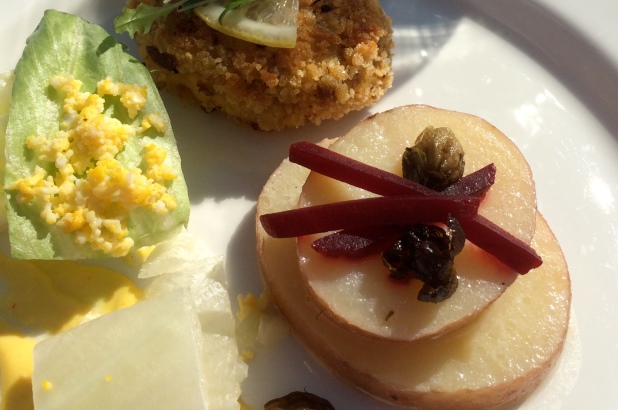
Mrs Maclurcan’s Lettuce salad, Tinned salmon rissole and Potato salad circa 1898 by Mudgee caterer Rebecca Sutton. Photo Jacqui Newling © Sydney Living Museums
Personal connections
Organiser Karen Bates and her tireless and enthusiastic crew of volunteers set the tables with pearls, paper flowers and lucky trinkets, a practice which Hannah instituted at The Wentworth Hotel in the early 1900s. The event was opened by Hannah’s great grandson John Maclurcan who has documented Hannah’s life with extraordinary research material including several photographs which were on display. In a family first he gathered together three generations of Maclurcan descendants, some of whom were meeting for the first time.
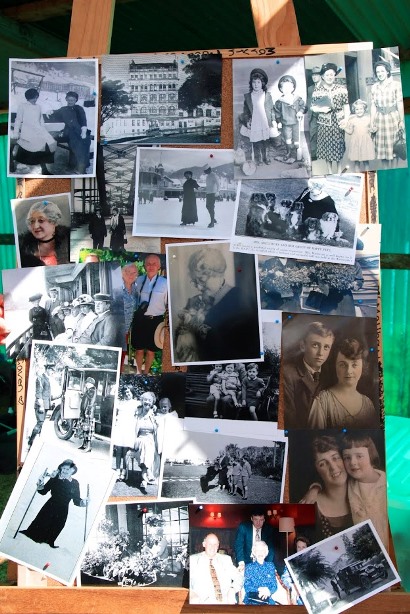
Photo montage showing snippets of Hannah’s life and some of her descendants Photo © Di Greenhaw
Thoroughly modern
Hannah was an exceptional woman and an ambassador for her times; with the dawning of the 20th century there was much progressive social and political change in the Australia. A new sense of independence emerged as women’s suffrage movements gained traction, culminating in having the right to vote (Indigenous women would have to wait until 1967), Federation was debated and delivered and the Victorian era ceased with the death of the Queen in 1901. Presenting herself as a practical, accomplished, modern woman and often mentioned in the social pages saw her self-titled cookbook set itself aside from the community compilation texts such as the Goulburn cookery book (1895) and educational institution or schools based texts such as The Commonsense cookery book (first published 1914) , and would have appealed to middle class women of her own vintage, both during and after the War.
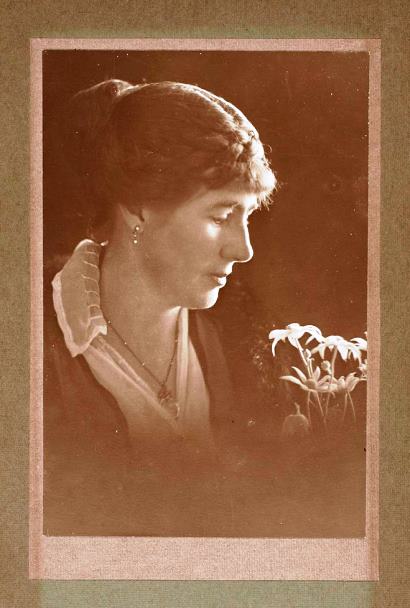
Nina Terry (nee Rouse). Creator May Moore (undated). Rouse Hill House and Farm collection R86/087.
Breaking with convention
It appears that Nina was one of these ‘thoroughly modern’ women (b1875; m1895). Born in 1875 to a well-off, influential family, Nina had a comfortable and privileged life. Her mother was a great entertainer and Nina continued the tradition of warm hospitality. Throughout her life she’d enjoyed the benefit of a resident cook, kitchen maids etc. One of her favourite pass times as a teenager however, was to watch the very capable family cook, Kate Joyce, at work. Kate ‘reigned supreme’ in the kitchen, cooking for the family for 50 years – first for Nina’s grandmother and when she died, for Nina’s mother at Rouse Hill House. [1]
In 1895, aged just 20, Nina married George Terry, a neighbour from an equally well to do family, and became mistress of her own homestead at Box Hill, just over the rise from her family’s estate. In 1924 however, her husband was having financial troubles and Nina and George returned, cap in hand, to her family home at Rouse Hill. By now, Nina’s mother had died and Kate Joyce had retired. Nina, now 50, decided to don an apron, and take over the cooking for the household, catering for her husband, father and sister and any visiting family or guests.This was quite a come-down from the genteel woman she was brought up to be, and a concept that horrified her sister Kathleen.[2]
Mrs Maclurcan’s potato salad
Ingredients
- 500g cold boiled potatoes
- salad cream or mayonnaise
- capers
- thin slice beetroot, boiled or pickled
- 2 eggs, hard boiled and chopped
Note
This salad can be served as a shared dish or with a more modern approach such as individual 'deconstructed' salads arranged in layers.
Directions
| Slice the potatoes very thinly into a salad bowl or glass dish (or stack 3 slices onto individual plates). Thin the salad cream or mayonnaise to pouring cream consistency with a small amount of white wine vinegar and pour over the potatoes to moisten. Garnish with chopped egg, the beetroot cut into matchsticks and a few capers and season to taste with salt and ground white pepper. | |
Beverley Kingston ‘Hannah Maclurcan’ Australian dictionary of biography
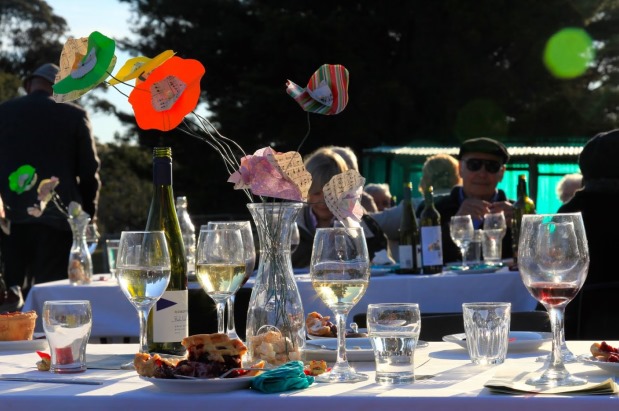
 Print recipe
Print recipe